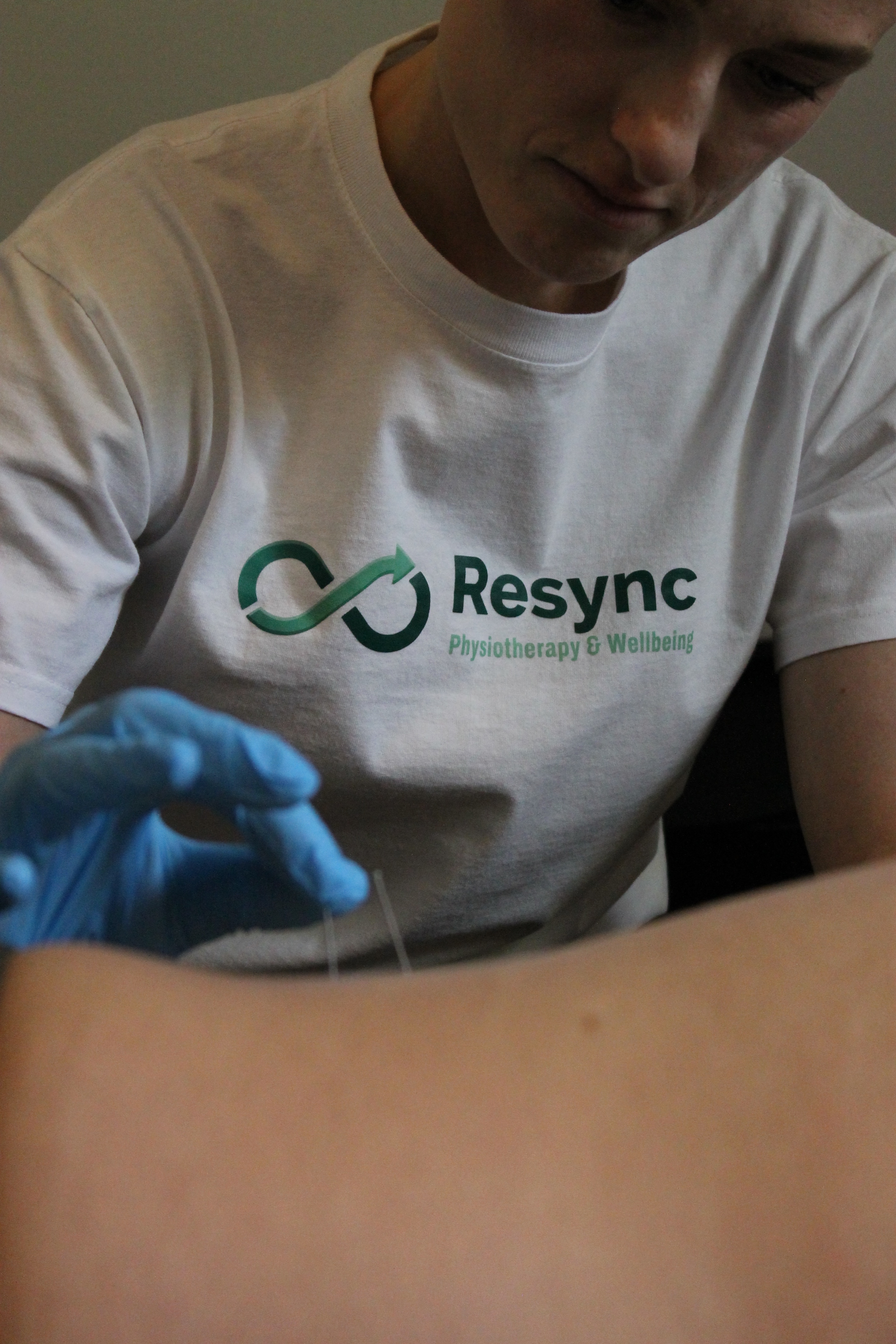Achilles Tendon Pain: Causes, Recovery, and How Physiotherapy Helps
Achilles pain can be stubborn. Whether it’s a sharp twinge when you run, stiffness first thing in the morning, or a dull ache that lingers after activity, problems with the Achilles tendon can stop you in your tracks.
At Resync, we see Achilles issues all the time — from runners, footballers, and gym users to people who simply enjoy staying active. Our approach is built around The Resync Method: a clear, progressive plan that tackles pain, restores strength, and helps you return to the activities you love with confidence.
Why Does Achilles Pain Happens
The Achilles tendon is the thick band that connects your calf muscles to your heel bone. It’s strong, but it works hard — absorbing load every time you walk, run, or jump. Over time, the tendon can become irritated or overloaded. Common causes include:
- Overuse from running, jumping, or sudden increases in training
- Tight or weak calf muscles
- Poor foot mechanics or footwear
- Reduced ankle mobility
- Previous injuries that weren’t fully rehabilitated
Sometimes this irritation is called Achilles tendinopathy — a longer-term condition where the tendon becomes painful and less efficient at handling load.
What Helps: Evidence-Based Strategies
Managing Achilles pain isn’t just about rest. The evidence shows the best results come from progressive rehabilitation:
Load Management
Rest alone rarely fixes the problem. Instead, adjusting how much load your tendon is exposed to — and gradually reintroducing it — is key to recovery.
Strengthening Exercises
Progressive strengthening, especially eccentric calf exercises (slowly lowering the heel), is one of the most effective treatments for Achilles tendinopathy. Over time, this helps the tendon adapt and become stronger.
Hands-On Physiotherapy
Manual therapy, soft tissue release, and joint mobilisation can provide short-term relief and improve mobility in the ankle and calf, making exercise easier.
Adjunct Therapies
Acupuncture, taping, or shockwave therapy (if appropriate) can sometimes be used alongside strengthening to support recovery.
Addressing the Bigger Picture
Foot posture, training technique, or strength imbalances in the hips and knees can all influence Achilles pain. At Resync, we look at the whole chain, not just the sore tendon.
The Resync Method for Achilles Pain
Here’s how we guide you through recovery:
- Assessment & clarity – Understanding what’s driving your tendon pain.
- Immediate relief – Reducing irritation with hands-on therapy or adjunct treatments.
- Progressive loading – Structured calf and lower limb strengthening tailored to your sport.
- Return to activity – Gradual reintroduction of running, sport, or gym training.
- Prevention & resilience – Building long-term calf strength and load tolerance to stop flare-ups.
How Long Does Recovery Take?
Achilles tendon pain can take time. Many people start to feel improvements within a few weeks, but full recovery can take 8–12 weeks or longer, depending on the severity and how consistently exercises are followed. The key is patience and progression — tendons adapt slowly, but with the right plan, they do recover.
Final Thoughts
Achilles pain can feel like a setback, but it doesn’t have to keep you sidelined. With the right assessment, progressive rehab, and ongoing support, you can get back to moving freely and performing at your best.




